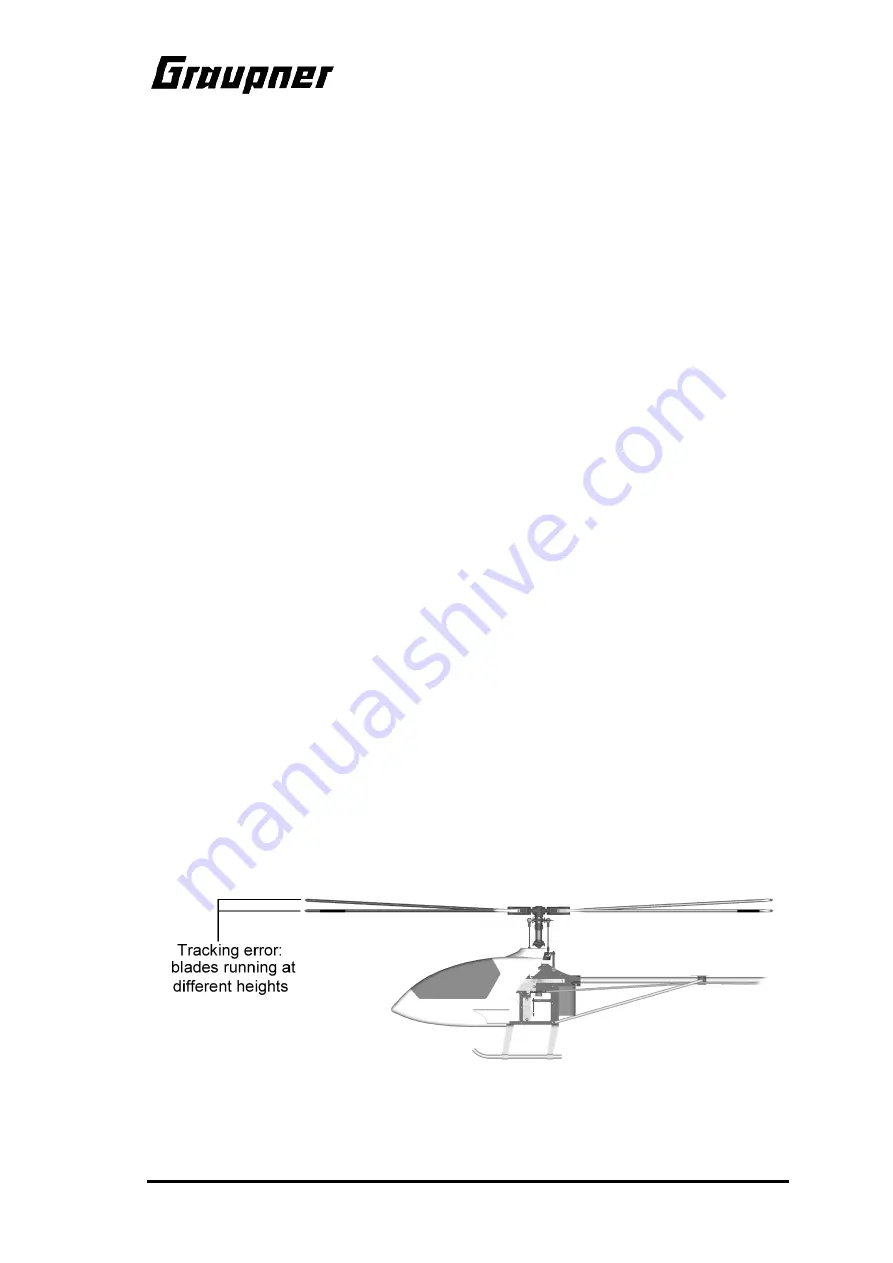
Micro Star 1000
25
7. Gyro adjustment
Gyro systems damp out unwanted rotational movements around the vertical (yaw) axis of the
model helicopter. They do this by detecting the unwanted motion and injecting a compen-
satory signal into the tail rotor control system. In order to achieve this effect the gyro electron-
ics are connected between the tail rotor servo and the receiver.
It is important to check that the direction of the gyro’s compensatory action is correct, i.e. that
it responds to a movement of the tail boom with a tail rotor deflection in the opposite direction.
If this is not the case, any yaw movement of the model would be amplified by the gyro! If it
works the wrong way round, the solution is to mount the gyro inverted.
One factor which is common to all gyro systems is that flight testing is necessary in order to
establish the optimum settings, as they are influenced by so many different factors.
The aim of the gyro adjustment process is to achieve as high a level of stabilisation as pos-
sible without the gyro causing the tail boom to oscillate.
3. Final pre-flight checks
When you have completed the model, please run through the final checks listed below before
the first flight:
•
Study the manual again and ensure that all the stages of assembly have been completed
correctly.
•
Check that all the screws in the ball-links and brackets are tightened fully after you have ad-
justed gear meshing clearance.
•
Can all the servos move freely, without mechanical obstruction at any point? Do they all ro-
tate in the correct direction relative to the stick movements? Are the servo output arm retain-
ing screws in place and tight?
•
Check the direction of effect of the gyro system.
•
Ensure that the transmitter and flight batteries are fully charged.
Don’t attempt to fly the helicopter until you have successfully checked everything as described
above.
4. Adjustments during the first flight; blade tracking
The term “blade tracking” refers to the height of the two rotor blades when they are spinning.
The adjustment procedure aims at fine-tuning the pitch of the main rotor blades to exactly the
same value, so that the blades rotate at precisely the same level.
Incorrectly set blade tracking, with the blades revolving at different heights, will cause
the helicopter to develop serious vibration in flight.
When you are adjusting the blade tracking, please keep at least five metres away from the
model in the interests of safety.
You can only check blade tracking if you are able to see clearly which blade is higher and which
is lower. The best method is to mark the blades with coloured tape as shown below.
Содержание Micro Star 1000
Страница 30: ...Micro Star 1000 2 Replacement parts...
Страница 32: ...Micro Star 1000 4...
Страница 34: ...Micro Star 1000 6...












































